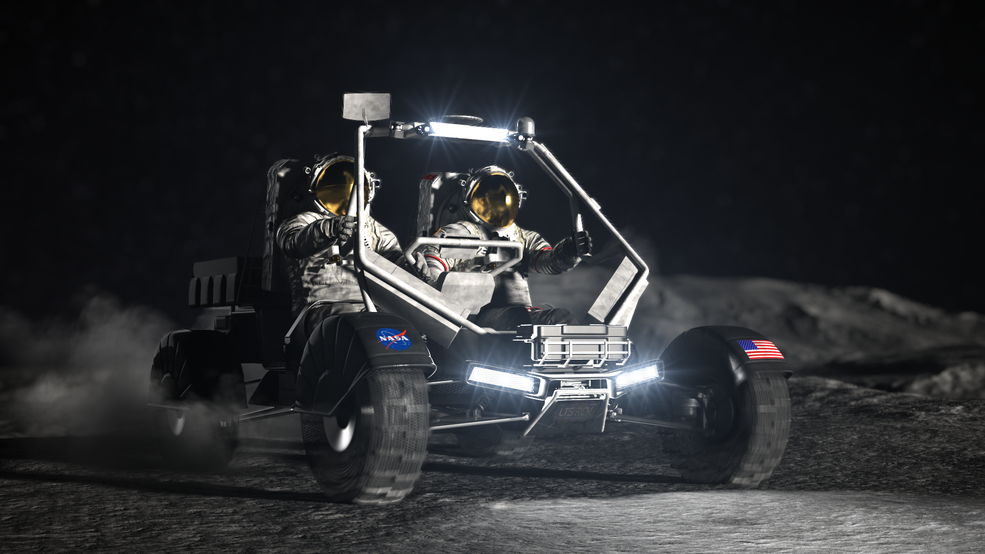28.05.2023

NASA is seeking industry proposals for a next-generation LTV (Lunar Terrain Vehicle) that will allow astronauts to go farther and conduct more science than ever before as they explore the south polar region of the Moon during Artemis missions.
Artemis astronauts will drive to explore and sample more of the lunar surface using the LTV than they could on foot. NASA will contract LTV as a service from industry rather than owning the rover. Contracting services from industry partners allows NASA to leverage commercial innovation and provide the best value to U.S. taxpayers while achieving its human spaceflight scientific and exploration goals.
“We want to leverage industry’s knowledge and innovation, combined with NASA’s history of successfully operating rovers, to make the best possible surface rover for our astronaut crews and scientific researchers,” said Lara Kearney, manager of NASA’s Extravehicular Activity and Human Surface Mobility program at the agency’s Johnson Space Center in Houston.
The LTV will function like a cross between an Apollo-style lunar rover and a Mars-style uncrewed rover. It will support phases driven by astronauts and phases as an uncrewed mobile science exploration platform, similar to NASA’s Curiosity and Perseverance Mars rovers. This will enable continued performance of science even when crews are not present on the lunar surface. Artemis astronauts will use the LTV to traverse the lunar surface and transport scientific equipment, extending the distances they can cover on each moonwalk.
Under the Lunar Terrain Vehicle Services request for proposals, NASA has provided requirements for companies interested in developing and demonstrating the LTV, including an approach that encourages companies to produce an innovative rover for use by NASA and other commercial customers for multiple years.
Engineers will be able to operate the LTV remotely to transport cargo and scientific payloads between crewed landing sites, enabling additional science returns, resource prospecting, and lunar exploration. This will expand scientific research opportunities on the Moon during uncrewed operations, allow scientists to investigate future surface mission locations, and inform research goals and objectives for each site.
To handle the unique environment near the lunar South Pole, which includes permanently shadowed regions and extended periods without sunlight, the LTV will need to incorporate several systems to support both crewed and uncrewed operations. Some of the more critical systems include advanced power management, semi-autonomous driving, state-of-the-art communication and navigation systems, and protection from the extreme environment.
As part of the proposals, companies are required to provide end-to-end services, from development and delivery to the lunar surface, to execution of operations. Each rover must be able to carry two suited astronauts, accommodate a robotic arm or mechanism to support science exploration, and survive the extreme temperatures at the lunar South Pole. The company will be asked to successfully demonstrate the LTV in the lunar environment prior to using it in a crewed capacity.
NASA intends to use the LTV for crewed operations beginning with Artemis V in 2029. Prior to crew arrival, the rover will be used for uncrewed and commercial activities once it lands on the lunar surface.
Proposals for the LTV services contract are due July 10, 2023, with the contract award scheduled for November 2023. This request for proposals incorporates feedback from industry through a draft request for proposals and a previous request for information.
Through Artemis, NASA will send astronauts – including the first woman and first person of color – to explore the Moon for scientific discovery, economic benefits, and to build the foundation for crewed missions to Mars. Together, NASA’s Space Launch System rocket, Orion spacecraft, Gateway lunar orbital outpost, advanced spacesuits and rovers, and human landing systems are the agency’s foundation for deep space exploration.
Quelle: NASA
